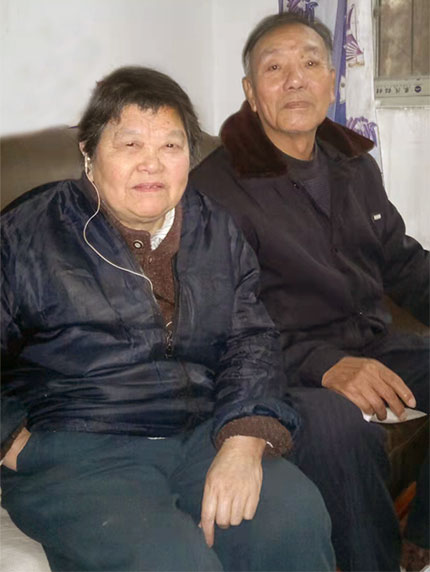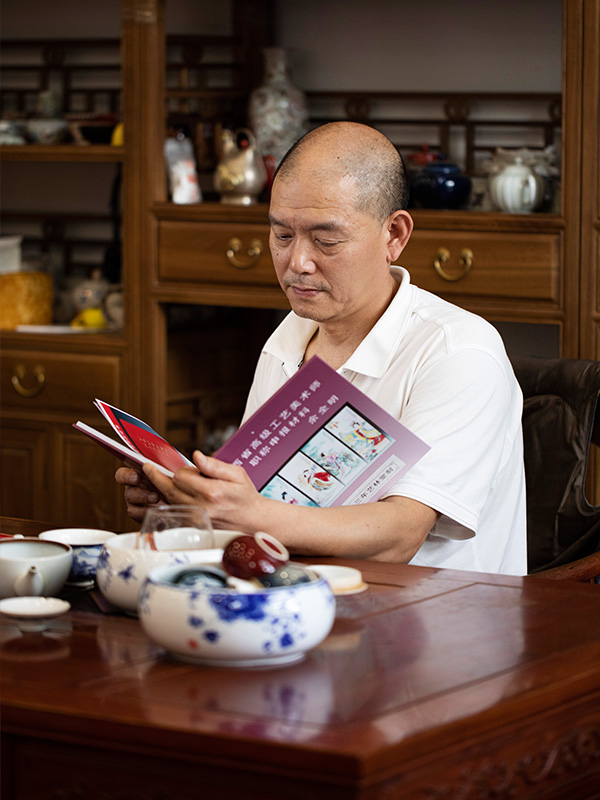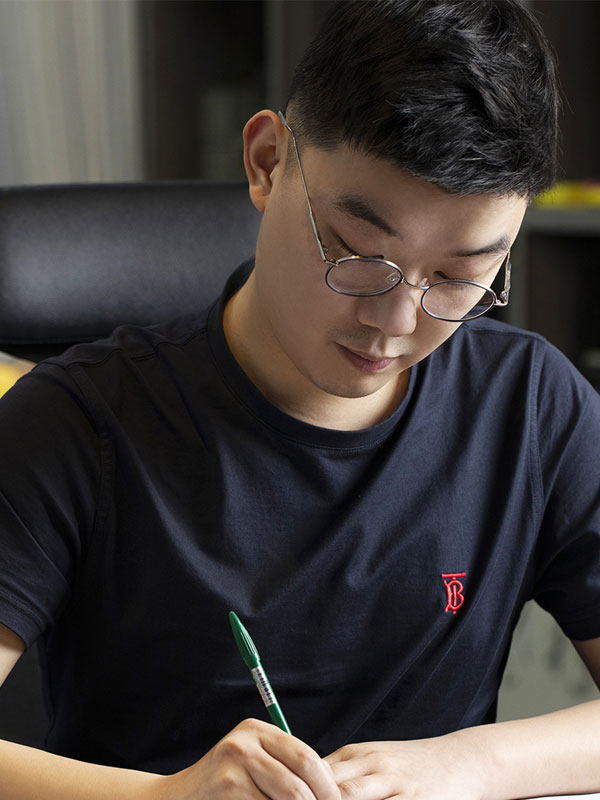Founded in 1953, it has been focusing on the inheritance and innovation of pastel for nearly 70 years.

In 1906, Yu Jingwang came to Jingdezhen from Duchang and started the business of making porcelain.
As the master of the pile, Yu Jingwang could control up to 8 wood kilns at the same time. He was the chief executive at that time and the representative of the wood kilns in Jingdezhen, which laid the foundation for the establishment of Yilintang.
Jingdezhen ceramic art master Zhang Jian painted a portrait for Yu Jingwang, and wrote a letter "in charge of the wind and fire, the changes are brilliant, the industry and commerce rely on the world, and the country is praised".
Yu Anheng learned from his father, Yu Jingwang, the craftsmanship and knowledge of kiln-making and ceramics. He also met Hong Taofeng, who was good at porcelain pastel painting. After falling in love for many years, the two got married in 1953 and established a two-person porcelain making business in Jingdezhen. Small workshop, named Yilintang. In the early days of the founding of the People's Republic of China, Yilintang mainly focused on daily-use porcelain, which was well-known in the Jingdezhen market and was in short supply. Afterwards, Yilintang was incorporated into Dongfeng Porcelain Factory, one of the top ten state-owned porcelain factories in Jingdezhen. Yu Anheng was appointed as the chief designer of the kiln project of Dongfeng Porcelain Factory due to his strong learning ability and unique insight into ceramics. All the expansion, the transformation of field furnaces, workshops and kilns, from wood kilns to coal kilns, coal kilns to gas kilns, and then to shuttle kilns, were all facilitated by Yu Anheng during his tenure.

Yu Anheng, founder of Yilintang

Yu Anheng(right), founder of Yilintang

1979 Yu Quanming, the second-generation hall owner, took over the craftsmanship of Lintang. With the changes in market demand and the increase in demand for antique porcelain, Yu Quanming led Yilintang to transform from daily-use porcelain to produce antique porcelain, mainly porcelain from Yongzheng, Qianlong and the Republic of China. , combined with Yilintang's own exquisite pastel craftsmanship and innovative porcelain-making technology for imitation. In the late 1980s, Yilintang gradually opened up the market due to its exquisite craftsmanship and delicate pastel painting, and exported its works to Southeast Asian countries. In Taiwan, Hong Kong, Singapore, Japan, and even auction houses, it was well received by peers and buyers. 's praise. Designated by the Palace Museum for many times, Yilin Hall adopts and restores the techniques and techniques of the Qianlong imperial kiln three hundred years ago to restore cultural relics, and at the same time reproduces and imitates the collections of cultural relics in the Palace Museum. Among them are the various glazed large vases of the Qing Dynasty, also known as porcelain mothers, which are now collected in the Palace Museum.

Mr.Yu Yin, YILIN’s third generation director, was born in the family of porcelain, influenced by his family since childhood. He loves traditional culture and art of China and has a strong interest in famille-rose porcelain since his early age. When he was still a child, he was familiar with the whole process of famille-rose porcelain production and decoration, and gradually developed his own unique views and understanding of ceramics. Till Yu Yin completely took over YILIN and managed the brand, he started to implement his ideas and plan. Yu Yin believes in respecting the original and ancient process and skills, convening excellent artist and painters, focusing the skills and process of famille-rose decoration, combining modern fashion and life art into the creation of all the porcelains.

“I live in a family of pastel porcelain, and I stand between the point of contact between the past and the present。
Due to years of family heritage, we have solid and exquisite pastel craftsmanship, but I feel that now is the budding and turning point of new pastel, and I have more historical responsibility to combine the information from the past world with today's life, aesthetics , the times seek to intersect each other and generate new dialogues”
---- Yu Yin----


 Hot search words
Hot search words
To email you about brand offers, services, products or events.
You can unsubscribe at any time via the link below the emails we send。